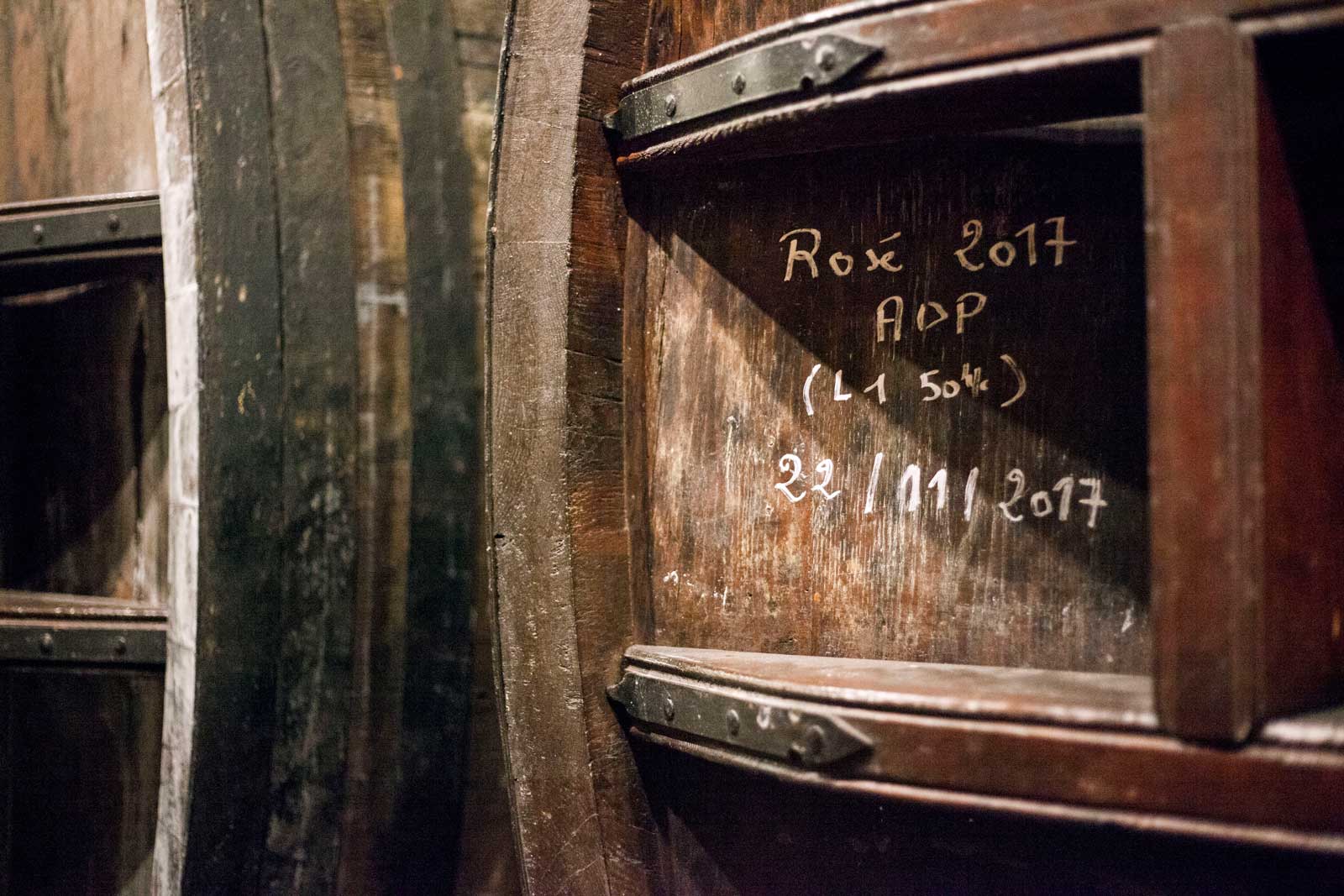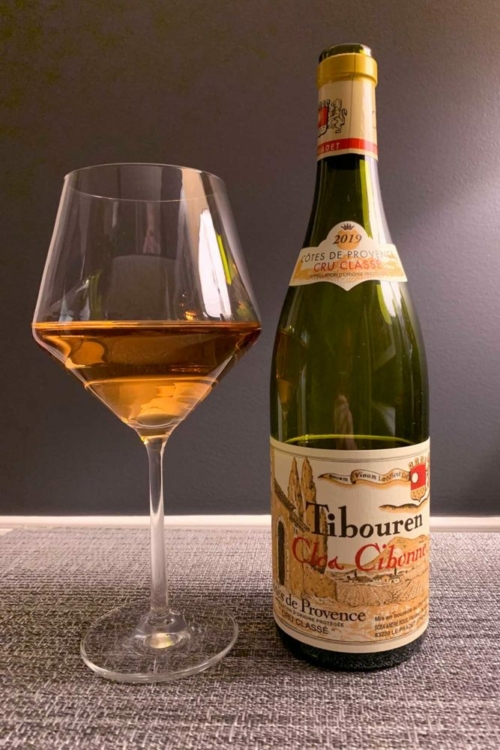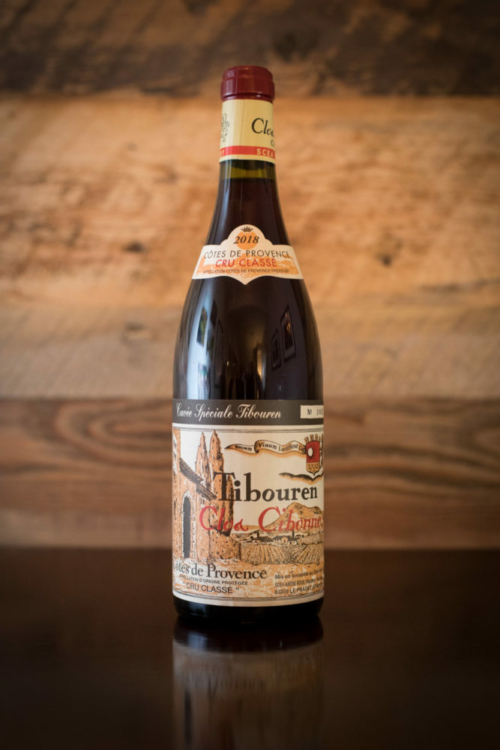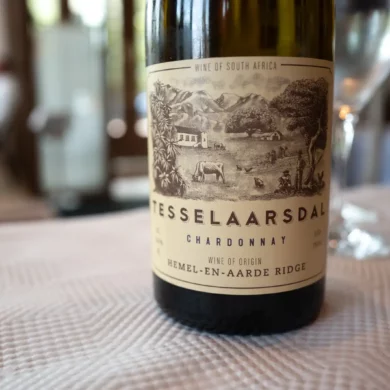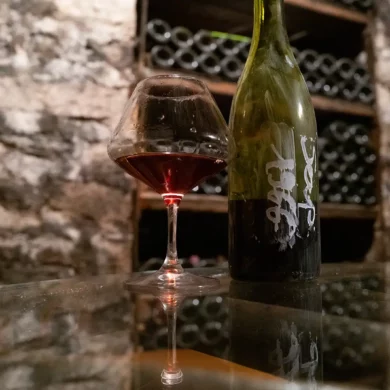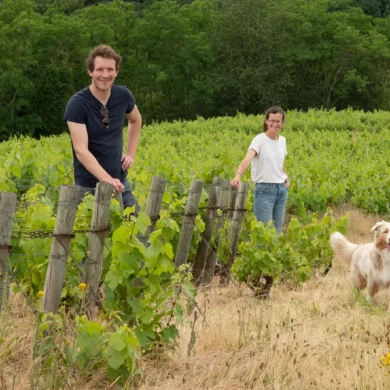There are many reasons a faithful winemaker might pray. Please don’t hail, comes to mind. Dear Lord, ensure this shipment an untroubled passage through the supply-chain, might be another. But the perilous annual rite that winemaker Olivier Deforges of Clos Cibonne described to me was on the same spectrum as a heart surgeon praying for steady hands.
You see, Clos Cibonne’s rosé wines are unlike anything else: radiant melon in color; somewhat spicy on the nose; supple and textural on the palate; a tinge of saltiness on the finish. To create these gems, Olivier relies on four unique elements that have defined Clos Cibonne for generations: Tibouren, terroir, flor and foudres (I’ll explain it all in a moment).
The foudres and Clos Cibonne are one and the same. For more than a century, these big oak casks have fostered the family’s reputation, each vintage leaving a piece of its spirit in the grain of the wood.
But it’s the last step in the process that requires a little celestial help. The estate’s two top wines — the Cuvée Tradition (★★★★ 3/4) and Cuvée des Vignettes (★★★★★) — are raised in oak casks known as foudres that are beyond a century in age. These ancient vessels have been showing signs of surrender for many vintages now. Leaks have emerged from tiny splits in the wood, an obvious sign that time waits for no one, not even beloved family heirlooms.
But Olivier is holding on. The foudres and Clos Cibonne are one and the same. For more than a century, these big oak casks have fostered the family’s reputation, each vintage leaving a piece of its spirit in the grain of the wood. Their most precarious moment each year is the transition between vintages, as the internal pressure of the matured wine coming out is enough to split them wide open. Once removed and while the grain is still saturated, Olivier and his team must clean the cask and bring the next vintage in, ever so delicately, before the wood can dry out and split even further.
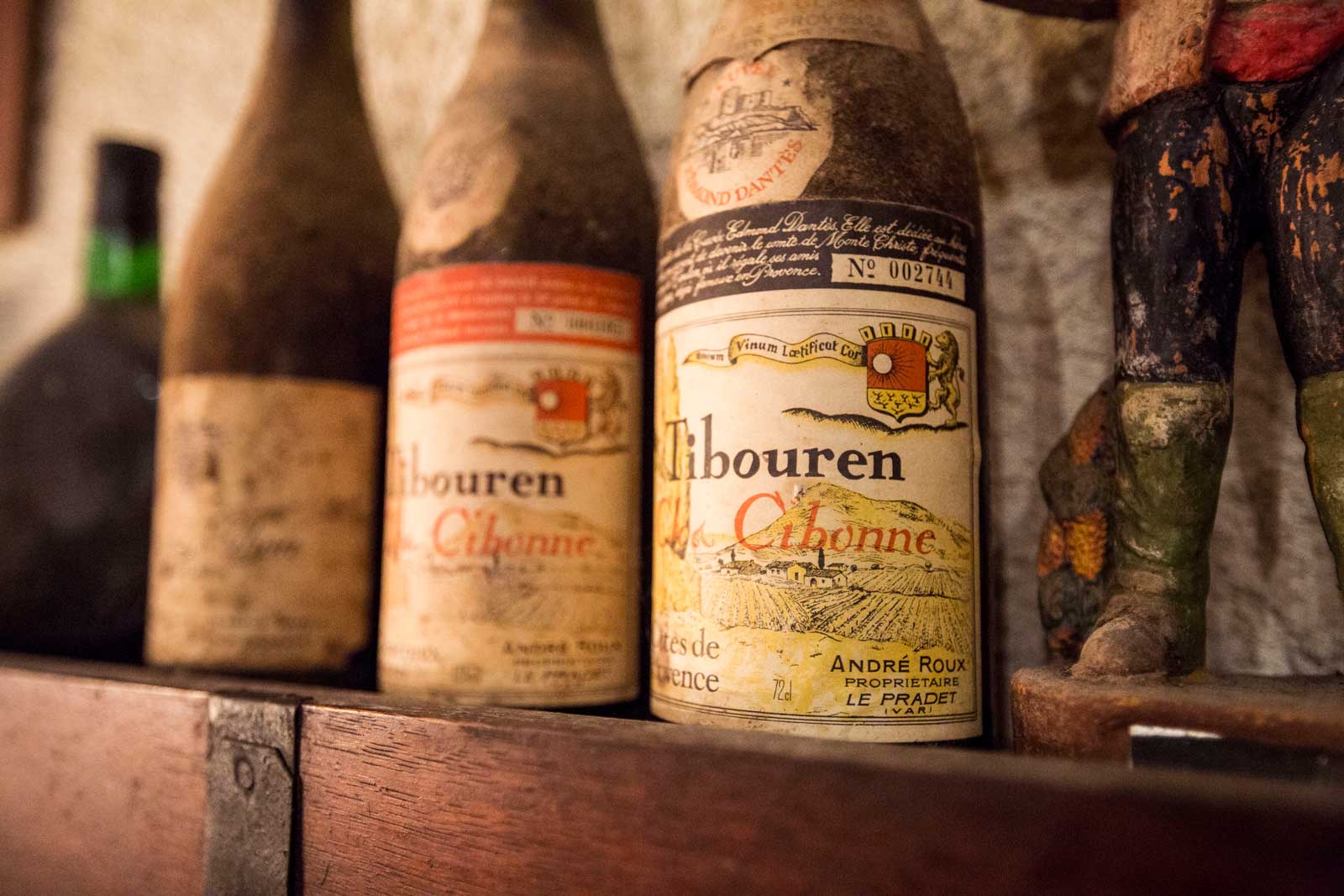
“It’s quite funny,” Olivier told me on our teleconference, the setting Provençal sun forcing him to squint as he virtually walked me through his vineyard on his mobile phone. “During something like two to three weeks, I pray every day that the foudre is tough.”
After he walked me through his process a little further, I commented “those sound like long days.”
“Yeah, stressful days,” he said, the tone in his voice adding a layer of You Have No Idea.
Of Tibouren and Terroir
Clos Cibonne is a small winery located five miles east of Toulon near the French Mediterranean coast. It was established after a count by the name of Cibonne fled the region in 1789 as the French Revolution trained its crosshairs on nobles. In 1804, the land was divided up by the government to the farmers who had worked the land for the Count — among them, the Roux family, who were granted 12 hectares. Over many generations, grapevines were tended for the purpose of making red and rosé wines, which achieved acclaim in the post-World War II years under the determined eye of André Roux, Olivier’s great-grandfather.
Appellation-wise, this is the Côtes de Provence AOC, a landscape awash in a painter’s palette of hues (ochre! emerald! azure!) but which has come to be known in the wine world for one color: pink. The commercial success of Provence’s style of rosé — a distinctly modern wine reliant on stainless-steel tanks and temperature-regulated fermentation — has been like a thick layer of gesso over the region’s historic viticultural canvas. At Clos Cibonne, we find a glimpse under that layer.
And like everywhere along Europe’s Mediterranean coast, you’ll find Roman fingerprints. When the Romans introduced viticulture to southern France, there is a possibility that Tibouren was among the grapes imported, although there is fervent debate over the what and when.
French botanist Pierre Galet first cited evidence that Tibouren has roots in Mesopotamia, and that it may have found its way to the Romans via Greece. Even the name, Tibouren, is suggestive of the Tiber River.
Yet another theory1 traces its roots only to the late 18th century when a Navy captain supposedly brought Tibouren to Provence, from which it propagated. Across the border in Italy’s Liguria, the grape is known as Rossese, where it is often planted on steeply sloped vineyards in the mountains. This genetic connection was only recently discovered, and whether the grape came to France then propagated into Italy, or the other way around, is still being worked out. However, the former seems more likely.
What is clear is that more than any winery, the Deforges family of Clos Cibonne have preserved Tibouren’s French legacy, and that largely has to do with the specificity of their site. The grape requires wind to stave off mildew and oidium (yes, even in Provence’s rather dry climate), and since Clos Cibonne’s vineyards have the sea on two sides, they benefit from a conduit of air that regularly passes between the two bodies.
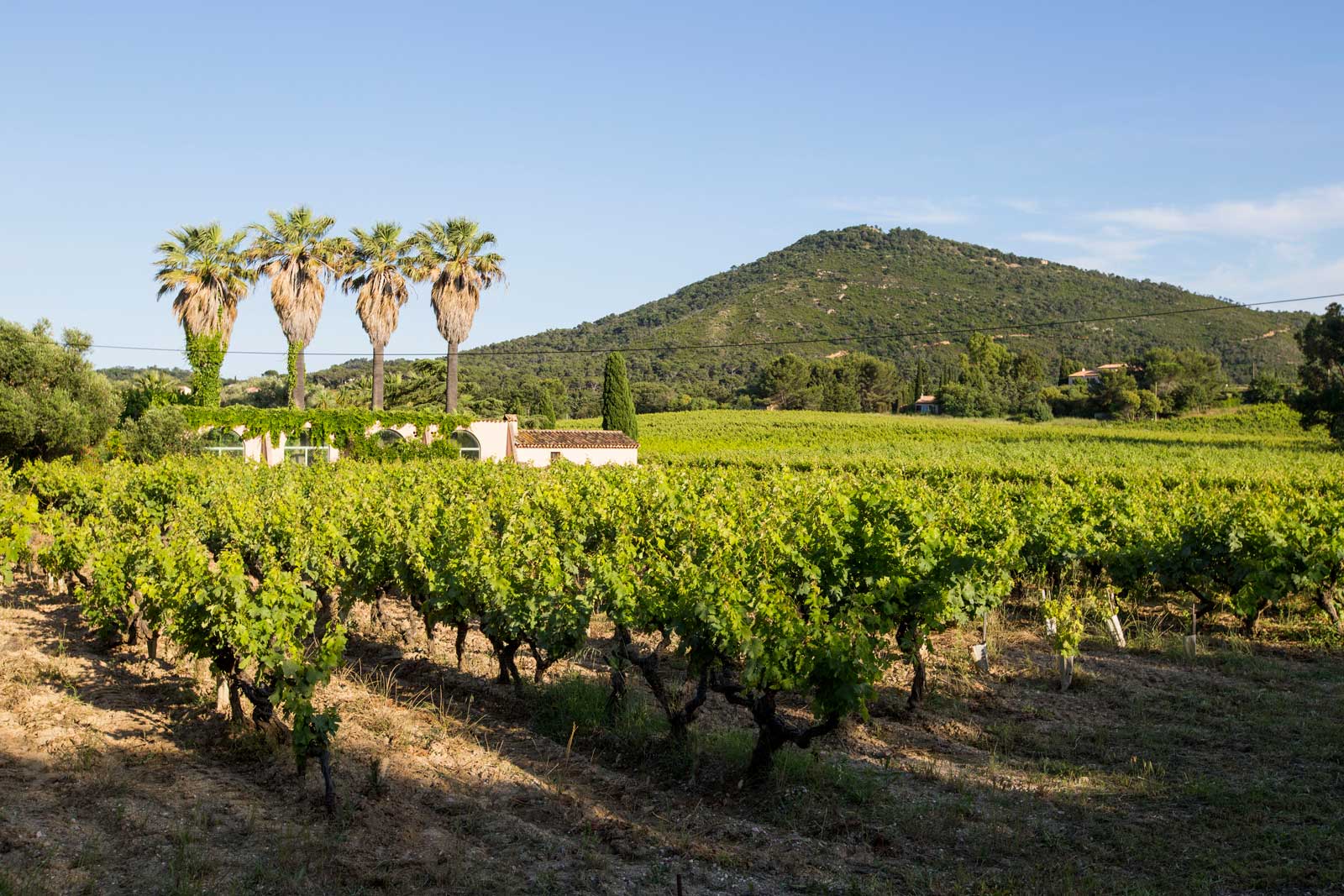
“Tibouren grapes do not have a big yield, so it is not a good choice for people who want to do some quantity [in their winemaking].”
Olivier Deforges
“Practically every day we have some wind,” Olivier noted. Wind itself is a frequently cited factor in the terroir of Southern France, with the famous Mistral defining Châteauneuf-du-Pape and the Southern Rhône AOCs, as well as several growing regions in Languedoc and Provence. That wind is seasonal. The particular wind at Clos Cibonne is persistent on a daily basis, and that regularity provides a climatic refuge for Tibouren. But it only partially explains why Tibouren’s plantings are so restricted in Southern France.
“Tibouren grapes do not have a big yield, so it is not a good choice for people who want to do some quantity [in their winemaking],” Olivier noted. As a result of its fickle nature, uneven ripening within single clusters, and lack of yield, Tibouren never gained a large foothold in Provence in the first place. The phylloxera plague of the late 19th century further suppressed its imprint on the industry.
Nonetheless, as the smoke cleared from phylloxera’s rampage, André Roux went all-in, planting Tibouren across the estate in 1930 and looking to Burgundy for inspiration, especially in his marketing.
“The Clos is not a wall,” Olivier chuckled when I pressed him on the origins of the name (admitting, however, that there is a fence). “My great-grandfather was totally a fan of Burgundy. If you know the labels, he took inspiration from the Burgundy bottles he found at the time in the 1930s.”
Biological Aging
Despite its stubbornness in the vineyard, Tibouren appealed to Roux in supporting his pursuit of elegance. While the estate focused on rosé production, there was also the opportunity to make a still red wine from Tibouren. That wine today — simply called Tibouren (★★★★ 3/4) — gets a small punch-up from 10% Grenache, but it is still a superb calling card of the grape’s inherent charms. Think of pomegranate juice, the snap of red currants and a faint hickory-wood earthiness along the edges, and you get close to its taste.
But it was Roux’s decision to make the Clos Cibonne rosé wines under fleurette (or flor) that has had the longest-lasting ripple effects on the domaine’s winemaking style. The family “recipe” calls for only filling the foudres up partially, which leaves enough headspace inside the cask for a waxy veil of yeast to form. Fans of sherry and the Jura’s Vin Jaune will be familiar with this trick: the fleurette largely protects the wine from oxygen and imparts a roasted-nut quality to the aromatics, while smoothing over the edges of the acidity, too.
“My great grandfather was the most important person in the family, [in terms of] the process and all manner to make our wines,” Olivier noted, but he also disclosed that they’ve shifted toward harvesting earlier than those older wines, which could clock in at 15.5% alcohol. The wines I tasted all carried a mellow freshness that feels on-point with current tastes.
But what I really wanted to know was where the line stood between terroir and process. With such an emphasis on biological aging in the cellar, were we still able to taste Tibouren, let alone the vineyard? Did it even matter? So singular are these wines — particularly the Cuvée des Vignettes — that we have no other wine from France or Liguria to compare them to.
I asked about the vineyard’s hallmarks on the juice. “When we harvest the Tibouren grapes, we have some particularities of the vineyards. Mainly with the [Cuvée des] Vignette you can find some red fruits, some white flower and tastes like that, still remaining in the wine. But every time we put the wine in the foudres, it is selective … We still have foudres that my great grandfather was using, from 1903. Some have had 110 wines or something like that.”
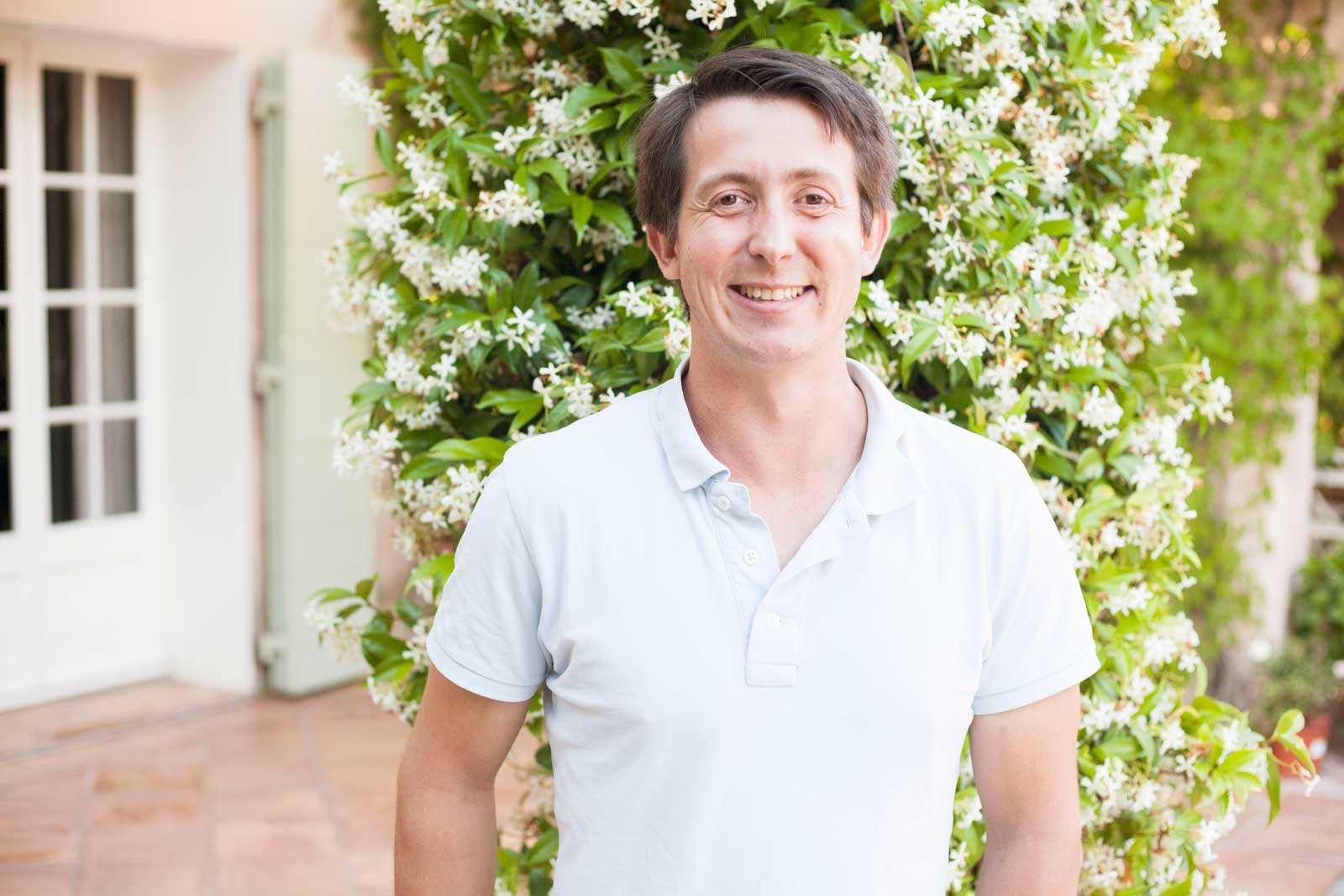
He added that the question wasn’t so much about putting tasting notes to the wine, but to embrace the totality of the process and the sum of its parts.
“Every foudre gives to the wine something special. It is something we really cannot explain.”
For those who like to debate whether terroir carries over into the cellar — especially on a microbial level — Clos Cibonne may as well be Exhibit A. Teasing out what’s from the vineyard environment and what’s from the foudre environment is beside the point, because each one cannot stand without the other and still carry the flag of the estate.
In the meantime, let’s all pray those big oak casks hold on. The world of wine isn’t quite the same without the stories they tell.
For specific tasting notes on the wines of Clos Cibonne, please visit their profile page in the Essential Winemakers of France section (subscribers only). Learn more about the benefits of subscribing to Opening a Bottle.
1Ganzin V. 1901-1910 as cited in Ian d’Agata’s Native Wine Grapes of Italy, p. 416, ©2014
Note: Three of the four wines tasted for this article were purchased with our editorial budget thanks to our paying subscribers who support this independent magazine. Due to its rarity, arrangements were made by Clos Cibonne’s importer, deMaison Selections, to provide a sample of the Cuvée Tradition. Learn more about our editorial policy.

